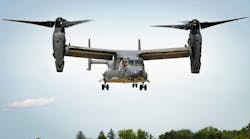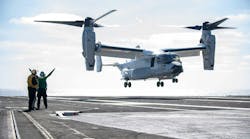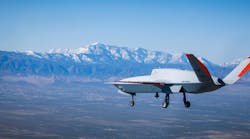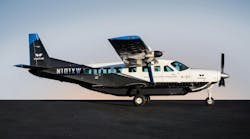July 16--It is big, grayish-green, and smells of oil.
At 68 years old, this B-17, often known as the Flying Fortress, is an aviation relic, designed just four decades after the Wright brothers first bounced into the air from a North Carolina sand dune.
Many of the more than 12,000 Boeing-designed bombers were shot down during the Allied campaigns against Germany and Japan. Others limped home, riddled with bullet holes from enemy fighters or anti-aircraft guns.
Today, just 13 of these four-engine planes, which dropped 640,000 tons of bombs during World War II, are still capable of flight.
One of them, a B-17 that never saw combat but was used in the filming of the 1990 movie "Memphis Belle," is in Erie this week and will be available this coming weekend for rides and on-the-ground tours at North Coast Flight School on Asbury Road.
At $450, a ride in the Liberty Foundation's B-17 isn't cheap. But the all-volunteer crew, which offered a free ride to reporters on Monday, is hoping that firsthand accounts of their flights might entice some aviation fans to take a trip back in time, minus the hazards of enemy fire.
The allure of an old plane like this one is a little different for everyone.
For David Lyon, a Delta Air Lines pilot who flies Boeing 777s for a living and the B-17 as a volunteer, it's a time machine to the roots of aviation. The principles of aviation were no different then, but the physical challenges were greater.
"It's a lot of fun," Lyon said. "It's basic, old-time aviation."
For World War II veterans, he said, the B-17 often sparks memories and conversations with their children and grandchildren.
"Some of the men who flew in it just want to come up and touch it," he said.
Mike Rinn, president of the local chapter of the Experimental Aircraft Association, wasn't worried about the oil dripping from the engines as the plane sat on the tarmac or the wisps of smoke that emerged from the engines as the plane roared to life. That's how aircraft engines of the day were.
"They say if a radial engine is not leaking oil then it's out of oil," he said.
Enthusiasm turned at least momentarily to fear as the 34,000-pound plane taxied to the runway at Erie International Airport.
Smoke from the engines drifted into the open windows where machine gunners were once stationed. The old plane creaked as it gathered speed, all four engines in full-throated growl as it hurtled up the runway.
And then, a few seconds later, the B-17, which spent nearly 20 years as a tanker used to fight forest fires, was airborne, winds whipping through the open windows.
Crew members talked about what it was like during the war, flying not at 1,000 feet, but at 30,000 feet, where temperatures in the cabin fell to 30 below and lower. It was easy to imagine the emotions of a ball turret gunner, locked into a tiny space on the belly of the ship.
But for a few minutes, it was just as easy to imagine what it must have been like for those early pilots, who flew with the wind in their face and perhaps a certain astonishment at defying the laws of gravity.
Modern commercial jets, with quieter engines, reclining seats, and in-flight movies seem designed to make us forget that we are flying thousands of feet above the ground in a slender, jet-propelled tube.
Strap yourself in the canvas jump seat of a B-17, next to an open window and the remains of a machine gun, and there's no forgetting where you are and the 1940s engineering that has you looking down on a moving map of Erie.
But Rinn, like Greg Hayes, owner of North Coast Flight School, seemed unable to stop smiling as they snapped pictures, leaned out the window and yelled in approval, their words lost beneath the roar of four 1,200-horsepower engines.
Rinn seemed especially eager to share the moment, offering a favored spot to someone standing nearby and leaning out the window to wave to those on the beach below.
JIM MARTIN can be reached at 870-1668 or by e-mail.
Copyright 2013 - Erie Times-News, Pa.




